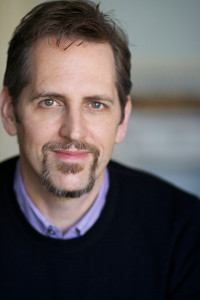Double Mumbo Jumbo is a term in the original Save the Cat book. Blake Snyder used it to caution against including two different types of unrelated fantastical elements in the same script.
As an example, he cited the 2002 Spiderman movie, where Peter Parker gets bitten by a radioactive spider and gains spider-like powers. Meanwhile, his nemesis the Green Goblin gets super powers coming from a totally different and fantastical lab accident.
The audience maybe went with it because these were well-established characters from a comic book franchise decades earlier, not an original script about brand new people and situations. (In that category, he takes Signs to task for mixing aliens and God questions in the same film.)
This issue of Double Mumbo Jumbo (and sometimes Triple, Quadruple, etc.) is more common than you might think. I often find myself bringing it up when I read scripts.
In my view, it comes from a single erroneous assumption:
“It’s easy to get audiences to buy into fantastical premises, powers, creatures and situations.”
Isn’t it?
Certainly countless movies, books and series have been based on fantastical situations . (Meaning not universally agreed-upon aspects of our normal world of today that we can all see and prove, which is why “God” can fall into this category.)
Some examples: Talking animals. Body switching. Vampires. The Afterlife. Superhero powers. Advanced psychic abilities. Time travel. Witches. Genies. Robots that can pass for humans and develop their own desires and emotions. Ghosts. Dystopias. Zombies. The end of the world…
Can you get an audience to suspend disbelief and enjoy a story about one of these things?
Yes. Obviously. But even that is harder than it looks. As I talk about in the “Believability” chapter of my book THE IDEA, it’s important to start off your script (or pitch for one) with a quick and clear introduction of what’s different in the world of your story from our world as it is right now.
Make that evident and understandable, and have the story center on that fantastical element. (In other words, it’s not some side issue that comes up in the middle or here and there.)
You’re making an agreement with the audience: this story is going to be all about two people who swap bodies, okay? A new spin on that, perhaps, but it’s essentially a body switching movie. That will be our focus. Can you please buy into that for the purpose of engaging with it?
And we’re going to take the time to make our version of that believable. Or at least sort of believable, with some nod to how extraordinary this leap is that we’re asking you to take.
For instance: In Act One, a kid makes a wish on a spooky carnival machine to be “Big.” Next morning, he wakes up in Tom Hanks’ body.
Can you imagine if that movie also had time travel? Or aliens?
It would be too much. It would feel too contrived. Too scattered. Too much to buy into.
What audiences really want is to be told a realistic, relatable and emotional story about human beings they can identify with, doing things they can understand and endorse. Maybe this happens in an extraordinary situation. But that fantastical element is a provider of conflict, nothing more. The real meat is the characters and what they’re doing and wanting. Making that real.
And so, you don’t test the audience’s willingness to go along with your premise by throwing too much at them, or not providing an explanation or mechanism for it, or making it a side issue that isn’t really explored. You don’t assume they buy into whatever you throw at them. They don’t.
Now in some situations set in worlds with advanced technologies (like Star Trek and Star Wars) you might get away with a few fantastical elements that would all believably be part of that — space travel, aliens, droids, cool transportation devices, etc. Maybe even time travel. (Maybe.)
But if you were to add superheroes who had powers for some other reason that isn’t explained by technology, then you’d run into trouble. Or if you added virtually anything else in the above list.
More is definitely not more when it comes to fantastical elements in scripts. It’s something to be used carefully, while respecting that audiences WILL go with you, up to a point. But only if you hold up your end of the bargain: make it all feel possible, take the time to really get them up to speed at the top, and don’t assume their infinite good will and patience as you spin of into multiple explorations of out-of-this-world stuff you might find fascinating, but they might not.
Ultimately, we’re trying to communicate with strangers and entertain them, which means meeting them where they’re at, and realizing what they need to be able to understand, buy in and engage.
And then giving it.



LOOPER is a prime example of double mumbo jumbo: it starts off as a cool time travel crime movie, then it adds a ‘dangerously powerful telekinetic kid’ storyline that turns the script into a schizophrenic muddle!
I remember, as a small child, really liking ice cream. I also really liked bacon and eggs. I proposed that mixing them together should be doubly good! My older brother told me “One at a time. You’re about to ruin both of them”
The only show that gets away with using all of this and more is Doctor Who (who even had a superhero). But still the writers use only one or sometimes two or three tropes per episode.
Indeed, it’s very distracting, and no doubt confusing, to watch a film (or read a script) with too many ingredients in the stew. Great reminder, Eric, thanks!